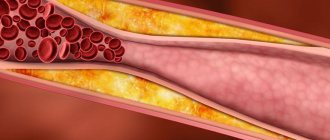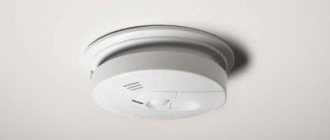True coffee lovers, who cannot imagine the morning without a cup of invigorating drink, very rarely limit themselves to just one serving per day. Freshly brewed coffee helps you wake up faster, invigorate your body, and get in the mood for work. To ensure a longer lasting effect, many drink a few more glasses throughout the day.
Despite the significant list of positive qualities, the negative effects of large amounts of caffeine can provoke various serious diseases. So how much coffee can you drink per day without harming your health?
Caffeine Metabolism
Caffeine is very easily absorbed into the plasma and has a high degree of absorption, although its duration of action is not very long. The process of complete disintegration takes no more than 5 hours. The metabolism of this substance does not depend on gender and age, but has a higher rate in people with nicotine addiction.
Caffeine penetrates into plasma, intercellular and intracellular fluids, some types of adipose tissue, and is processed by the liver, after which it is excreted from the body.
Caffeine can be natural or synthetic; there is practically no difference between their effects on the body. Its amount can only be measured by taking a saliva test, where this substance accumulates more intensely.
© joshya — stock.adobe.com
Composition and influence of coffee
The percentage of chemical components of coffee beans and some additives may differ depending on the variety, quality of the crop, country and place of growth, roasting method, and preparation technology.
There are three main types of coffee: Robusta, Arabica, Liberica. The first is the richest, strongest and most aromatic. Arabica is suitable for those who prefer a softer taste and unobtrusive aroma. Liberica is less common - it has a specific smell, but at the same time a completely unsaturated taste and a very weak strength. The chemical composition of coffee is represented by many elements. Among them are the most important:
- tannins are complex organic substances that are responsible for the taste of coffee and add bitterness;
- alkaloid trigonelline - creates not only taste, but also aroma;
- chlorogenic acid - coffee beans are the leader in its content, gives an astringent, tart taste;
- caffeine is a colorless and tasteless component that affects the central nervous system.
The amount of caffeine content has a direct impact on the daily intake of a particular type of coffee. For example, Arabica varieties contain on average 30% less caffeine than Robusta varieties. This means that the daily intake of such coffee may be higher.
Effect on the body
Caffeine is a stimulant of the central nervous system, activating the brain, motor function, increasing endurance, performance, and reaction speed. Taking the substance leads to increased breathing, heart rate, increased blood pressure, dilation of the bronchi, blood vessels, and bile ducts.
Caffeine has the following effects on the body:
- Activates brain function.
- Reduces fatigue.
- Increases performance (mental and physical).
- Accelerates heart contractions.
- Increases blood pressure.
- Stimulates the functioning of the gastrointestinal tract.
- Speeds up metabolism.
- Has a diuretic effect.
- Increases breathing speed.
- Dilates blood vessels.
- Stimulates the liver to produce additional sugar.
Caffeine content
Caffeine is the main active ingredient to which coffee owes its invigorating and stimulating effect. Its content varies in drinks made from different grains and according to different recipes.
- Don't miss: Table of caffeine content in tea, coffee and other drinks
If we compare the types of raw materials, Arabica has 2 times less caffeine than Robusta: 1.5% versus 3%. Therefore, the more aromatic and noble Arabica has a softer effect.
Not all of the caffeine from the ground beans ends up in the cup. The hotter the water and the longer the brewing time, the stronger the drink. Espresso from a carob or coffee machine contains more substance than Turkish coffee or French press.
Espresso-based drinks (Americano, cappuccino, latte and others) contain the same amount of caffeine as the original espresso shot. But its concentration becomes lower due to the addition of milk and boiling water, and the taste becomes softer. The content per 100 grams will vary.
Sources
It should be remembered that even decaffeinated drinks contain small amounts of caffeine (from 1 to 12 mg per cup).
| Drink | Volume, ml | Caffeine content, mg. |
| Custard | 200 | 90-200 |
| Caffeine-free brew | 200 | 2-12 |
| Espresso | 30 | 45-74 |
| Soluble | 200 | 25-170 |
| Coffee with milk | 200 | 60-170 |
| Black tea | 200 | 14-70 |
| Green tea | 200 | 25-43 |
| RedBull | 250 | 80 |
| CocaCola | 350 | 70 |
| Pepsi | 350 | 38 |
| Hot chocolate | 150 | 25 |
| Cocoa | 150 | 4 |
| Products | ||
| Black chocolate | 30 gr. | 20 |
| Milk chocolate | 30 gr. | 6 |
Permissible caffeine intake
According to average statistical indicators, 300 mg of caffeine per day or no more than 120 - 150 mg at a time is considered optimal. But these data cannot be equated to everyone, due to the individual health characteristics of each person. For some, 6 cups of espresso will be a kind of doping that will not provoke any special consequences. For another, a couple or three cups of Americano can cause tachycardia and nervousness. You can only determine your norm of use yourself.
Depending on the method of preparing coffee, the daily amount may also vary. For comparison, the caffeine content in one cup of espresso ranges from 80 to 135 mg, while in a cappuccino it ranges from 60 to 80 mg. The range of values is due to the many different varieties, slightly but differing in composition.
The lowest caffeine content is found in decaffeinated varieties - only about 4 mg. But drinking such coffee every day in unlimited quantities is still not recommended. In order to reduce the presence of caffeine, the beans are subjected to repeated chemical processing, which negates all the intended benefits. In addition, there is no tonic, invigorating effect.
Excess
Excessive caffeine consumption can lead to unpleasant consequences for the body:
- sleep disturbance;
- increased pressure;
- cardiac diseases;
- gout;
- urinary incontinence;
- fibrocystic mastopathy;
- upset stomach;
- frequent headaches;
- increased anxiety;
- suppression of collagen production;
- increased bone fragility.
© logo3in1 — stock.adobe.com
Caffeine
Caffeine is a psychostimulant drug.
It is produced in the form of an injection solution and tablets. Caffeine sodium benzoate reduces drowsiness and stimulates physical, mental and mental activity. The drug “stimulates” the nervous system, stimulates the respiratory and vasomotor centers, dilates blood vessels, and enhances cardiac activity. Caffeine tablets should be taken at a dose of 50-100 mg two to three times a day for adults, and for children the dosage is 30-75 mg two to three times a day.
It is necessary to take tablets for headaches, problems with blood vessels, arterial hypotension, decreased performance, enuresis and respiratory depression.
Caffeine in ampoules
Caffeine is available not only in tablets, but also in ampoules in the form of a 20% solution for injection. 1 ampoule contains 80 mg of caffeine, 120 mg of sodium benzoate and excipients.
Ampoules of the solution are used to treat respiratory depression due to poisoning with mild narcotic drugs and to restore pulmonary ventilation after anesthesia. There is also another use of caffeine in ampoules - as part of wraps and masks in the fight against cellulite.
To wrap, mix 3 ampoules of caffeine with a pack of cosmetic clay and add olive oil to obtain a thick consistency, then apply the mixture after taking a shower to problem areas and lie there for 20 minutes. The result will become noticeable after 10 procedures: the skin will become elastic, muscle tone will increase and the fat layer will decrease.
Caffeine for weight loss
1 caffeine tablet has the same effect as a cup of double strong coffee. After taking the drug or coffee for several hours, you feel a surge of strength, breathing quickens, blood pressure rises, and the body spends more energy in this rhythm, burning fats.
If you also dance and do exercises, the weight loss process will be even faster. Caffeine also dilates blood vessels and blood flows to the skin, which allows you to cleanse it of toxins, eliminate swelling and deliver oxygen, which is necessary for burning fat.
Half an hour before training, take 1 tablet per 30 kg of body weight, but no more than 4 pieces.
Information content of the site: Dmitry N.
Name:
Caffeine (Cofleinum)
Pharmachologic effect:
Psychostimulant and analeptic , methylxanthine derivative. Competitively blocks central and peripheral A1 and A2 adenosine receptors.
Inhibits the activity of PDE in the central nervous system, heart, smooth muscle organs, skeletal muscles, adipose tissue, promotes the accumulation of cAMP and cGMP in them (this effect is observed when used only in high doses).
Stimulates the centers of the medulla oblongata (respiratory and vasomotor), as well as the n.vagus center, has a direct stimulating effect on the cerebral cortex.
In high doses, it facilitates interneuronal conduction in the spinal cord , enhancing spinal reflexes. Increases mental and physical performance, stimulates mental activity, motor activity, shortens reaction time, temporarily reduces fatigue and drowsiness.
In small doses, the stimulation effect prevails , and in large doses, the effect of depression of the nervous system predominates. It speeds up and deepens breathing.
Usually it has a positive ino-, chrono-, bathmo- and dromotropic effect (since the effect on the cardiovascular system consists of a direct stimulating effect on the myocardium and a simultaneous stimulating effect on the n.vagus centers, the resulting effect depends on the predominance of one or another action).
Stimulates the vasomotor center and has a direct relaxing effect on the vascular wall, which leads to dilation of the vessels of the heart, skeletal muscles and kidneys, while the tone of the cerebral arteries increases (causes a narrowing of the blood vessels of the brain, which is accompanied by a decrease in cerebral blood flow and oxygen pressure in the brain).
Blood pressure changes under the influence of vascular and cardiac mechanisms of caffeine's influence: with normal initial blood pressure, caffeine does not change or slightly increases it; with arterial hypotension, it normalizes it.
It has an antispasmodic effect on smooth muscles (including a bronchodilator effect), and a stimulating effect on striated muscles. Increases the secretory activity of the stomach.
It has a moderate diuretic effect , which is due to a decrease in the reabsorption of sodium and water ions in the proximal and distal renal tubules, as well as dilation of renal vessels and increased filtration in the renal glomeruli.
Reduces platelet aggregation and histamine release from mast cells.
Increases basal metabolism : increases glycogenolysis, increases lipolysis.
Indications for use:
- diseases accompanied by depression of the central nervous system, functions of the cardiovascular and respiratory systems (including poisoning with opioid analgesics, infectious diseases); - cerebral vascular spasms; - decreased mental and physical performance;
- drowsiness.
Mode of application:
Administered subcutaneously or taken orally. Adults – 100-200 mg 2-3 times/day; children – 25-100 mg 2-3 times/day.
Side effects:
From the side of the central nervous system : sleep disturbance, agitation, anxiety; With prolonged use, addiction is possible. From the cardiovascular system : tachycardia, increased blood pressure, arrhythmias. From the digestive system : nausea, vomiting.
Contraindications:
– arterial hypertension; – organic diseases of the cardiovascular system (including severe atherosclerosis); – glaucoma; – increased excitability; – sleep disorders; – old age;
– children under 12 years of age.
Interaction with other drugs
by other means:
When used simultaneously, the effect of sleeping pills and anesthetics is reduced .
With simultaneous use, it is possible to enhance the effect of analgesics-antipyretics, salicylamide, naproxen.
With the simultaneous use of estrogens (hormonal contraceptives, drugs for HRT), it is possible to increase the intensity and duration of action of caffeine due to inhibition of the CYP1A2 isoenzyme by estrogens.
When administered concomitantly with adenosine, caffeine reduces the increased heart rate and blood pressure changes caused by adenosine infusion; reduces vasodilation caused by the action of adenosine. With simultaneous use, it is possible to increase the bioavailability, absorption rate and plasma concentration of acetylsalicylic acid.
With simultaneous use, mexiletine reduces the clearance of caffeine and increases its plasma concentrations, apparently due to mexiletine inhibition of caffeine metabolism in the liver. Methoxsalen reduces the excretion of caffeine from the body with a possible increase in its effect and the development of toxic effects.
The most pronounced increase in AUC and decrease in clearance are observed with simultaneous use of caffeine with enoxacin, ciprofloxacin, pipemidic acid; less pronounced changes - with pefloxacin, norfloxacin, fleroxacin. When used simultaneously, caffeine accelerates the absorption of ergotamine.
Pregnancy:
with caution during pregnancy and lactation. Excessive use during pregnancy can lead to spontaneous abortions , retardation of intrauterine development of the fetus, arrhythmia in the fetus; There may be disturbances in skeletal development when using large doses and a slowdown in skeletal development when using lower doses. Passes into breast milk in small quantities, but accumulates in infants and can cause hyperactivity and insomnia.
Overdose:
Symptoms: abdominal pain, agitation, anxiety, mental and motor agitation, confusion, delirium (dissociative), dehydration, tachycardia, arrhythmia, hyperthermia, frequent urination, headache, increased tactile or pain sensitivity, tremor or muscle twitching; nausea and vomiting, sometimes with blood; ringing in the ears, epileptic seizures (in case of acute overdose - tonic-clonic seizures). Caffeine in doses of more than 300 mg per day (including against the background of coffee abuse - more than 4 cups of natural coffee, 150 ml each) can cause anxiety, headache, tremor, confusion, extrasystole.
Treatment: gastric lavage, use of laxatives, activated carbon.
If the patient has hemorrhagic gastritis, he is administered antacid medications and the stomach is washed with a 0.9% sodium chloride solution, and artificial ventilation is maintained.
If convulsions occur during an overdose, diazepam, phenytoin, phenobarbital are administered intravenously, and water-electrolyte balance is maintained.
Release form:
Caffeine solution for subcutaneous administration 100 mg/1 ml, 200 mg/2 ml, 400 mg/2 ml in ampoules of 10 pcs. Tablets 100 mg , 6 or 10 tablets in a blister pack or 10 tablets in a blister pack. 1 or 2 blister packs along with instructions for use are placed in a cardboard box.
Storage conditions:
At room temperature. Keep out of the reach of children.
Compound:
1 ampoule of Caffeine solution for subcutaneous administration contains caffeine sodium benzoate 200 mg.
1 ml of caffeine-sodium benzoate solution for subcutaneous and subconjunctival administration contains caffeine sodium benzoate 200 mg.
1 ml of caffeine-sodium benzoate solution for subcutaneous administration contains caffeine sodium benzoate 200 mg.
1 tablet of caffeine sodium benzoate contains: – active ingredient: caffeine sodium benzoate – 100 mg; – excipients: potato starch – 15.77 mg, calcium stearate – 0.23 mg.
Andrey
I can’t imagine my life without caffeine! If I can’t drink a cup of coffee or tea in the morning, I prefer to take a pill. I get up very early, it’s a long drive to work, and then at work I don’t have time to drink tea, so a caffeine pill sometimes helps me out so that I don’t get drunk at work, but think quickly. My work requires quick reactions, and caffeine helps me!
2016-02-07T11:34:15
Dinara
and I am now taking these pills in the third trimester. My blood pressure has dropped a lot, I don’t want to go to the doctor - they’ll put me in the hospital. And if I take a couple of tablets, my blood pressure rises, although it doesn’t last long. Tea and coffee don’t really help. Maybe it’s wrong to prescribe pills to yourself at such a moment, but I don’t see any other way out.
2014-09-25T14:46:15
Anya Denisova
I occasionally drink caffeine when I diet and exercise. I drink on an empty stomach, then I work out. It increases my performance and I can do more exercises.
When taking caffeine for weight loss, you should eliminate or very limit your intake of carbohydrates. I also use caffeine ampoules along with other wraps on the thighs and buttocks.
This does not help with weight loss, but it improves the condition of the skin and makes the silhouette more beautiful.
2014-09-25T14:36:33
Source: https://MedHall.ru/kofein/
The modern rhythm of life requires a person to be completely involved in its whirlpool, which is why so many people desperately lack rest. How to overcome the resulting drowsiness? A cup of aromatic coffee often helps to disperse drowsiness and get into active mode. But this method does not always work.
Therefore, many people choose an alternative - a drug called “Caffeine”.
The instructions for use characterize it as a psychostimulant drug, the effectiveness of which is associated with the alkaloid it contains, produced from tea leaves (2% caffeine), coffee beans (1-2 percent) and cola nuts.
“Caffeine sodium benzoate,” which can be found in pharmacies, is a synthetic drug derived from these compounds.
Pharmacological properties (application)
A derivative of methylxanthine, caffeine, has a psychostimulating and analeptic effect on the body.
Its main property is the ability to improve motor activity, stimulate positive reflexes and various excitation processes occurring in the cerebral cortex.
Thanks to this effect on the body, mental and physical activity increases, drowsiness disappears, and the feeling of fatigue decreases.
What other effects does caffeine have? Instructions for use warn of increased and deepening of breathing when taking the drug, narrowing of blood vessels in the brain and a decrease in oxygen pressure in it. In cases of arterial hypotension, caffeine often normalizes blood pressure.
The alkaloid has an antispasmodic effect on smooth muscles and a stimulating effect on striated muscles. Under the influence of caffeine, the secretory activity of the stomach increases and the basal metabolism increases (increased glycogenolysis, accelerated lipolysis).
A moderate diuretic effect is also a consequence of caffeine consumption.
The drug is prescribed for diseases accompanied by a depressed state of the central nervous system, for disorders of the cardiovascular and respiratory systems (including poisoning with drugs, alcohol and toxins as a result of an infectious process), asphyxia, asthenia, enuresis (including in children), migraine, to relieve spasms of cerebral vessels. In ophthalmology, caffeine is used after eye surgery to reduce tone and retinal detachment.
This medicine is also indicated for decreased mental and physical performance, drowsiness, and to restore the optimal level of activity. A steady trend in recent years has been the use of this drug as a catalyst for the process of losing weight.
In this case, the obligatory conditions are strict adherence to the dosage, doctor’s recommendations and physical activity. In cosmetology, the mixture of “Caffeine-sodium benzoate” and “Capsicam” has proven itself to be an effective anti-cellulite wrap.
Release form
“Caffeine sodium benzonate” (containing up to 40% caffeine) is available in the form of injection solution, tablets and powder (capsules).
Directions for use and dosage
How to take Caffeine correctly? Tablets, the instructions for use of which advise their use orally no more than 2-3 times a day, are prescribed for adults in a single dose of 100-200 mg (no more than 0.4 g) and a daily dose of no more than one gram, for children - according to 25-100 mg. Caffeine ampoules (1 ml) are intended for subcutaneous and subconjunctival administration.
https://www.youtube.com/watch?v=tlQnsL9fePg
Children are injected subcutaneously with a ten percent caffeine solution of 0.25-1 ml. In ophthalmology, a 10% solution of caffeine in ampoules is also used: no more than 0.3 ml of the drug is dripped under the conjunctiva once a day. The dosage and duration of treatment are prescribed by the doctor and depend on the patient’s condition, as well as the nature of the disease. Caffeine sodium benzoate should not be taken before bed.
Contraindications
The instructions for use do not recommend prescribing the psychostimulant “Caffeine Benzoate” to people with arterial hypertension, increased excitability, sleep disorders (insomnia), those suffering from atherosclerosis, tachycardia, epilepsy, convulsions, increased intraocular pressure (glaucoma). The drug is also contraindicated for children under 12 years of age and elderly people. Anti-cellulite masks and wraps with caffeine should not be applied to affected areas of the skin.
Side effects
When taking a drug containing caffeine, the instructions for use advise paying attention to possible negative reactions of the body: from the central nervous system - anxiety, agitation, tremor, headache, restlessness, convulsions, dizziness, increased muscle tone, increased reflexes, insomnia, tachypnea . If the drug is abruptly discontinued, lethargy, drowsiness, fatigue, and increased inhibition of the central nervous system reaction may occur.
From the cardiovascular system, arrhythmia, tachycardia, and increased blood pressure are possible. From the gastrointestinal tract - nausea, exacerbation of peptic ulcers, vomiting, colic. With long-term use, addiction and dependence on the drug is possible due to the formation of new adenosine receptors in the brain cells.
Overdose
What symptoms can excess caffeine cause? Instructions for use warn in such cases about increased severity of side effects: anxiety, confusion, mental and motor agitation, tremors or muscle twitching, epileptic seizures; dehydration, tachycardia, arrhythmia, headache, ringing in the ears, hyperthermia, frequent urination, nausea and vomiting.
The same conditions can occur after taking 300-600 mg (4 cups) of coffee per day, especially if combined with taking Caffeine Sodium Benzoate tablets.
special instructions
During pregnancy and while breastfeeding, caffeine is taken only in cases of extreme necessity and under the supervision of a doctor! Abuse of the drug and drink threatens possible spontaneous abortion, slowing of intrauterine development, inhibition or disturbances in skeletal development, and arrhythmia in the fetus. During the lactation period, caffeine penetrates into breast milk and, accumulating, threatens insomnia in the baby and its hyperactivity.
The drug must be stored away from children, out of reach of them, at temperatures up to 25 degrees, for no more than 5 years.
The cost of “Caffeine-sodium benzoate” tablets (6 pieces) in pharmacies today is approximately 32-40 rubles, a package of 10 ampoules (1 ml) of 20% solution is sold for 40-64 rubles.
Analogs
In addition to tablets produced in blisters of 6 or 10 pieces, as well as a solution for injection in ampoules, in pharmacies you can find drugs with various combinations of substances, which include caffeine.
What other medications containing caffeine are listed in the instructions for use of medications? Expert reviews call the following analogues: “Askofen” (40 mg) and “Coficil Plus” (50 mg of the substance in question), “Migrenol” and “Solpadeine Fast” - 65 mg each, “Aquacitramon” (45 mg), as well as “Citramon” "and regular "Solpadeine" - 30 mg each. Among the drinks containing this common psychostimulant, reviews on forums mention coffee, tea, hot chocolate and soda (cola). The weight loss product Liquid Chestnut, which contains guaranine (an analogue of caffeine and theine), has a double concentration of caffeine.
Source: https://fb.ru/article/217515/kofein-instruktsiya-po-primeneniyu-pokazaniya-tsenyi
CAFFEINE
Solution for subcutaneous administration 1 ml caffeine sodium benzoate 100 mg
1 ml – ampoules (10) – cardboard packs. 2 ml – ampoules (10) – cardboard packs.
pharmachologic effect
Psychostimulant and analeptic drug, a derivative of methylxanthine. Competitively blocks central and peripheral A1 and A2 adenosine receptors.
Inhibits the activity of PDE in the central nervous system, heart, smooth muscle organs, skeletal muscles, adipose tissue, promotes the accumulation of cAMP and cGMP in them (this effect is observed when used only in high doses). Stimulates the centers of the medulla oblongata (respiratory and vasomotor), as well as the center n.
vagus, has a direct stimulating effect on the cerebral cortex. In high doses, it facilitates interneuronal conduction in the spinal cord, enhancing spinal reflexes.
Increases mental and physical performance, stimulates mental activity, motor activity, shortens reaction time, temporarily reduces fatigue and drowsiness. In small doses, the stimulating effect predominates, and in large doses, the effect of depression of the nervous system predominates.
Speeds up and deepens breathing. Usually it has a positive ino-, chrono-, bathmo- and dromotropic effect (since the effect on the cardiovascular system consists of a direct stimulating effect on the myocardium and a simultaneous stimulating effect on the n.vagus centers, the resulting effect depends on the predominance of one or another action).
Stimulates the vasomotor center and has a direct relaxing effect on the vascular wall, which leads to dilation of the vessels of the heart, skeletal muscles and kidneys, while the tone of the cerebral arteries increases (causes a narrowing of the blood vessels of the brain, which is accompanied by a decrease in cerebral blood flow and oxygen pressure in the brain).
Blood pressure changes under the influence of vascular and cardiac mechanisms of caffeine's influence: with normal initial blood pressure, caffeine does not change or slightly increases it; with arterial hypotension, it normalizes it.
Increases the secretory activity of the stomach.
It has a moderate diuretic effect, which is due to a decrease in the reabsorption of sodium and water ions in the proximal and distal renal tubules, as well as dilation of renal vessels and increased filtration in the renal glomeruli.
Reduces platelet aggregation and histamine release from mast cells.
Increases basal metabolism: increases glycogenolysis, increases lipolysis.
Indications
Diseases accompanied by depression of the central nervous system, functions of the cardiovascular and respiratory systems (including poisoning with opioid analgesics, infectious diseases), cerebral vascular spasms, decreased mental and physical performance, drowsiness.
Dosage
Administered subcutaneously or taken orally. Adults – 100-200 mg 2-3 times/day; children – 25-100 mg 2-3 times/day.
From the side of the central nervous system: sleep disturbance, agitation, anxiety; With prolonged use, addiction is possible.
From the cardiovascular system: tachycardia, increased blood pressure, arrhythmias.
From the digestive system: nausea, vomiting.
Drug interactions
When used simultaneously, the effect of sleeping pills and anesthetics is reduced.
With simultaneous use, it is possible to enhance the effect of analgesics-antipyretics, salicylamide, naproxen.
https://www.youtube.com/watch?v=qpKwtXqgJeY
With the simultaneous use of estrogens (hormonal contraceptives, drugs for HRT), it is possible to increase the intensity and duration of action of caffeine due to inhibition of the CYP1A2 isoenzyme by estrogens.
When administered concomitantly with adenosine, caffeine reduces the increased heart rate and blood pressure changes caused by adenosine infusion; reduces vasodilation caused by the action of adenosine.
With simultaneous use, it is possible to increase the bioavailability, absorption rate and plasma concentration of acetylsalicylic acid.
With simultaneous use, mexiletine reduces the clearance of caffeine and increases its plasma concentrations, apparently due to mexiletine inhibition of caffeine metabolism in the liver.
Methoxsalen reduces the excretion of caffeine from the body with a possible increase in its effect and the development of toxic effects.
Due to the induction of microsomal liver enzymes under the influence of phenytoin, its simultaneous use accelerates the metabolism and excretion of caffeine.
Fluconazole and terbinafine cause a moderate increase in the concentration of caffeine in the blood plasma, ketoconazole - less pronounced.
When used simultaneously, caffeine accelerates the absorption of ergotamine.
Age categories and dose of coffee
We have already talked about the norm for adults, but how much coffee can a teenager drink per day? For teenagers (and coffee is only allowed from the age of 14), the norm and frequency of coffee consumption is naturally less - no more than two cups of coffee (2KE) per week. It should be remembered that you need to start drinking coffee with less strong varieties, preferably with cream.
Parents should monitor the child’s condition after drinking coffee, and if the body reacts negatively, seek help from a doctor.
Harm and contraindications
The harm of caffeine depends on the dosage and the condition of the body. If a person is healthy, then the substance will only have a positive effect. It will also help get rid of some problems. But if you abuse caffeine-containing products, negative consequences will not keep you waiting.
It's no secret that this substance is addictive. It stimulates the release of the hormone dopamine and suppresses fatigue. Therefore, abruptly stopping caffeine consumption can cause withdrawal symptoms.
Many people feel nervous and tired in the morning until they drink their treasured cup of coffee. This is a manifestation of the so-called “coffee mania.” To get rid of this addiction, you need to gradually reduce the dosage.
So why is caffeine harmful?
- It reduces the absorption of calcium in the body. Due to frequent consumption of caffeinated drinks, the acid-base balance in the stomach is disturbed. The degree of absorption of nutrients decreases, so the body is forced to compensate for the lack of calcium by borrowing it from the bones. Over time, this can lead to osteoporosis (brittle bones).
- Due to the strong diuretic effect, dehydration occurs.
- strong stimulation of the nervous system causes sleep disturbance and increases irritability.
- in large doses it causes surges in blood and eye pressure, which is especially dangerous for older people.
- Contraindicated for diseases of the cardiovascular system. It has a particularly depressing effect in combination with alcohol and cigarettes.
- Due to the constant stimulation of gastric secretion, problems with the gastrointestinal tract arise, and people with high acidity should not use it at all.
- Constriction of blood vessels in the brain leads to insufficient blood flow, which contributes to early aging.
- Excessive caffeine consumption by men harms their sexual health and potency. A decrease in erection occurs due to the action of plant estrogens, a small amount of which does not pose any danger.
You should be careful when consuming caffeine-containing products during pregnancy, because their effects also affect the baby. The fetus's heart rate and metabolism increase, which can negatively affect its health.
Thus, a large concentration of this substance has a depressing effect on the body. Only moderate consumption will help you avoid negative consequences and benefit.
Overdose
Large amounts of caffeine have a negative impact on physical health and can even be fatal. People with cardiovascular diseases and high blood pressure should be especially careful.
It is believed that 10 g of this substance is a lethal dose. You can get it by drinking 70 cups of coffee in a row. However, people suffering from “coffee addiction” receive about a tenth of this amount.
Symptoms of the negative effects of caffeine on the body:
- arrhythmia,
- strong increase in pressure,
- irritability,
- insomnia
- increased excitability.
Daily dose of coffee so as not to harm your health
There are people who drink four to six cups of the drink per day. They receive a charge of vigor and taste, stimulating themselves to more fruitful work. Others drink carefully - half a cup in the morning and enough, believing that more is harmful. How many cups of coffee can you have a day?
Scientists have developed a standard value of 100 milligrams of caffeine. That’s what it’s called – Coffee Unit, abbreviated as KE .
One coffee unit is 50-60 ml of double espresso or 200 ml of brewed (bean) coffee.
Allowance of coffee per day per person. According to Canadian researchers (link at the end of the article), a safe dose is 4KE - 400 mg of caffeine per day, which is approximately 4 cups of double espresso or 8 cups of regular espresso. If you brew bean coffee in a Turk, then no more than 800 ml in total per day.
Single dose of coffee
A safe single dose is 200 ml of caffeine (2 coffee units) - this could be two double espressos or 400 ml of Turkish coffee. By the way, there are people who drink this way - pouring a large cup.
If you drink your daily dose in several doses, it is recommended to drink the next portion no earlier than 6 hours later - caffeine should be eliminated from the body during this time. If you drink very small volumes (1 coffee unit each), then the next portion can be drunk after 3-4 hours without harm.
Instant, cereal: what dosage is safe
How many spoons do you usually put in a cup of coffee? Of course, everyone has their own preferences, but the average values for calculating 1 KE are as follows:
– ground coffee – 3 teaspoons;
— instant coffee – 2 spoons;
If you prefer a different dosage, you can calculate the caffeine concentration based on these values.
For these dosages (taking into account that the safe dose is 4KU) the calculation is as follows:
- instant coffee – 2 spoons * 4KE = 8 spoons per day;
- natural coffee – 3 spoons * 4KE = 12 spoons per day.
Concentration is also important - the more water, the safer it is for health.
Decaf coffee should also be drunk responsibly - there is still 5 mg of caffeine in 200 ml of decaf coffee. This is small, so the dose can be quite large. However, such coffee contains solvents and chemicals. additives that negatively affect the gastrointestinal tract and heart. Therefore, 4 two-hundred-gram cups per day is the norm.
Sodium caffeine benzoate in tablets and ampoules – why to take it and instructions for use
Coffee invigorates, gives strength and energy, stimulates the nervous system and increases blood pressure. These are all known facts, but not everyone prefers to start their day with this drink.
In this case, the use of a simple medication, Caffeine-sodium benzoate, will help increase mental performance and get rid of the effect of drowsiness.
However, first you should find out: what are its optimal dosages, contraindications or side effects, interactions with other drugs and the average cost.
A xanthine derivative, a good psychostimulant nootropic - all this is about the simple medicine Caffeine sodium benzoate.
The drug is quickly absorbed from the digestive tract, transformed, and then moves throughout the body through the bloodstream, thanks to which the drug can achieve effectiveness within 30 minutes after administration.
The maximum concentration of caffeine in the lymph is maintained for 3-5 hours, after which the metabolites are excreted along with the urine.
https://www.youtube.com/watch?v=jbU_SWViyQY
Caffeine tablets are used as an effective nervous system stimulant. They affect excitation receptors, which increases mental and motor activity, drowsiness and apathy disappear.
Caffeine benzoate reduces the effects of narcotic drugs and reduces the effectiveness of sleeping pills.
After taking it, an increase in cardiac activity, a rise in blood pressure, and an increase in heart rate are also observed.
Compound
The main active ingredient is a derivative - caffeine benzoate, the mass fraction of which is 0.2 grams. The following auxiliary components have been added to the composition: microcrystalline cellulose, lactose, calcium stearate, corn starch and povidone. If we consider the medicine in solution, then its components will be:
- caffeine sodium benzoate 200 mg;
- caustic soda solution pH 6.8-8.5 to 0.1 m;
- liquid for injection with a mass fraction of up to 1 ml.
Why do they take it?
As a rule, the drug is prescribed by doctors when performance deteriorates, or when the patient complains of lethargy or excessive drowsiness. However, the instructions for use state that Caffeine sodium benzoate will help in the presence of the following diseases or disorders:
- severe migraines;
- cardiovascular hypotension;
- asthenic syndrome;
- low speed of reactions to external stimuli;
- general weakness of the body;
- oppression;
- constant headaches (in combination with other medications);
- decreased peripheral brain activity;
- drowsiness;
- child with enuresis.
However, the positive properties of the medicine do not end there. Very often it is used as an effective means for losing weight.
When used in this way, Caffeine Benzoate acts as a fat burner that has a rapid analeptic effect.
Due to this property, coffee tablets are often used by athletes in bodybuilding, athletics, weightlifting, or other strength sports, when the gained fat mass is not critical.
At low pressure
Caffeine affects the respiratory center, eliminates shortness of breath, and facilitates gas exchange processes.
However, the main advantage of its mechanism of action is the effect of stimulating the vascular parts of the brain: sodium benzoate dilates the walls of blood vessels, tones and helps reduce cerebral blood flow.
Due to these properties, at low pressure, a noticeable increase in blood pressure is recorded, due to which the drug is recommended to be taken for hypotension.
Instructions for use Caffeine-sodium benzoate
Before using sodium benzoate, it is advisable to additionally consult a doctor. He will tell you in detail: how to take caffeine tablets, what doses to adhere to and how long to continue treatment. If this is not possible, you should use the general recommendations for use:
- To improve performance and influence the central nervous system, you need to drink 50-100 mg of caffeine two to three times a day. The course of therapy ranges from two weeks to a month.
- If you have severe headaches, cerebral vascular spasms or migraines, you should drink sodium caffeine benzoate in the same dosage, but not longer than 2-3 days.
- To eliminate mild arterial hypotension, adults are prescribed 50-80 mg of the drug 2-3 times a day.
Interaction
The drug sodium benzoate combines well with many medications: atropine, bronchodilators, glycosides, analgesics, bromides. Drug interactions are:
- decreased effectiveness of sleeping pills;
- mutual assistance in excreting lithium drugs in the urine;
- accelerating the absorption of cardiac drops, tablets, solutions, increasing their effectiveness.
Products with the highest caffeine content:
Coffee beans Instant coffee Guarana fruit Black tea Green tea Mate Kola nuts Cocoa Decaffeinated coffee Black chocolate Milk chocolate Drinks with coca leaves Guarana drink Jolt drink Red Bull drink
Caffeine is a well-known natural stimulant. It has pronounced tonic properties. Made from plant materials (coffee, tea, guarana, mate).
Available in tablets, it is included in some dietary supplements and products for athletes. It is found in many medications for headaches and asthma.
The effects of caffeine on the human body are not clear. It can be characterized as either positive or negative. In very large quantities it is toxic.
Daily caffeine requirement
Caffeine is not a vital substance for the body. Doctors recommend taking 1-2 tablets per day in the first week if migraines occur. Then take 1 tablet of a drug containing caffeine for no more than 1 month.
Bodybuilding experts recommend taking caffeine in an amount of 3 mg per 1 kg of weight 30 minutes before training. This dosage of the substance can increase the body's performance by 20%. To make it easier to navigate the amount of caffeine, you can use this guide. 1 cup of tea (237 ml) contains 100 mg of caffeine.
The need for caffeine increases
- for diseases accompanied by depression of the central nervous system;
- with frequent spasms of cerebral vessels (migraines and other types of headaches);
- with reduced mental activity;
- in states of shock, in a state of collapse, with the threat of loss of consciousness;
- with low physical performance, weakness and drowsiness;
- with hypotension;
- asthma;
- when diagnosed with enuresis in children;
- when losing weight;
- for breathing problems and diseases such as idiopathic apnea in newborns.
The need for caffeine is reduced:
- with high blood pressure;
- for chronic diseases of the heart and blood vessels;
- with atherosclerosis;
- weak nervous system;
- for oncological diseases;
- for neuropsychiatric disorders;
- in case of sleep disturbance (insomnia);
- for glaucoma (contraindicated);
- in old age;
- in children (due to the lability of the nervous system);
- in preparation for pregnancy (excess caffeine reduces the possibility of fertilization);
- during pregnancy and breastfeeding.
Caffeine Absorption
Caffeine is easily absorbed by our body, but it irritates the mucous membranes of the gastrointestinal tract and clogs the body.
The effect of caffeine on the body was studied by I.P. Pavlov. Studies have shown that caffeine enhances arousal processes in the cerebral cortex. It also affects the increase in physical activity.
Caffeine stimulates performance, while significantly reducing the feeling of fatigue and drowsiness. Using caffeine helps prevent blood clots.
So, with fairly moderate consumption, the substance has the following features:
- is a stimulant that reduces the feeling of drowsiness and fatigue;
- improves mood;
- sharpens the functioning of the senses;
- protects against strokes;
- is a stimulator of active blood circulation;
- accelerates metabolism, stimulates fat burning;
- used for vascular spasms;
- used as a natural antidepressant.
- causes an increase in mental and physical activity;
- acts as a trainer for the heart and blood vessels, by increasing the frequency of contraction of the heart muscle.
Interaction with Essential Elements
It is not recommended to consume caffeine and caffeine-containing products immediately after meals. This may negatively affect the absorption of certain vitamins and minerals (magnesium, calcium and sodium).
Caffeine has a mild diuretic effect. If you use caffeine in large quantities, dehydration may occur.
Interacts with analgesics, increasing their bioavailability to the body.
Signs of a lack of caffeine in the body:
- low blood pressure;
- reduced blood cholesterol levels;
- fast fatiguability;
- decreased mental and physical activity;
Signs of excess caffeine in the body:
- hyperactivity and agitation;
- insomnia;
- hypertension;
- tachycardia, cold sweat;
- dry mouth;
- nausea and vomiting;
- frequent urination;
- tinnitus;
- state of anxiety, unjustified anxiety, “tremor”;
- depression, fatigue;
- drowsiness (at very high dosages);
- confusion of consciousness.
In order for the level of caffeine in the body to be normal, a nutritious diet that includes foods containing it is sufficient. In this case, it is worth paying attention to the individuality of the body: diseases, age, chronic diseases, intolerances and allergies.
Caffeine for beauty and health
Caffeine increases the strength and performance of muscles, promotes their intense contraction. Athletes are allowed to use caffeine before training. Caffeine as a doping is prohibited in competitions.
The benefits of caffeine for creating a strong and beautiful body is the topic of many discussions. There is no definitive answer about the advisability of using it before training.
Caffeine is also an essential component of weight loss creams.
Source: https://edaplus.info/food-components/caffeine.html
How much coffee can an adult, pregnant women and teenagers drink per day?
Coffee is a tasty, aromatic and invigorating drink. It is often included in breakfast as it helps to wake up. Coffee made from beans (not instant) has a beneficial effect on the body.
However, it should be remembered that if it is consumed excessively, the harm to the body is noticeable (for the nervous and cardiovascular systems). This is why it is necessary to have an idea of how much coffee you can drink per day.
In moderate amounts, coffee, or rather the caffeine it contains, has a beneficial effect on the body:
- Eliminates fatigue;
- Increases the production of joy hormones serotonin and dopamine;
- The functioning of the digestive organs is normalized;
- Heart contractions increase;
- Blood vessels dilate, which improves tissue nutrition.
How many cups of coffee can you drink per day without harm to your health? To answer this question, it is necessary to take into account the type of drink consumed and the volume of the cup in which it is served. A certain type of drink is served in its own cup (of a specific volume).
Espresso (strong black coffee without milk) should be drunk in small cups with a volume of 40 - 70 milliliters. But they drink lattes in large volumes, about 300 milliliters.
But at home, people use non-standard cups. Based on this condition, many experts (doctors and nutritionists) agree. You can drink 1 – 2 cups of coffee a day without harm to your health.
If a person drinks black strong coffee, then he should limit himself to 1 cup in the morning. If milk or cream is added to the drink, some of the caffeine is neutralized. This drink can be drunk up to 3 times a day, 150 - 200 milliliters per dose.
Harm to the body is observed when drinking 4 or more cups of coffee. If at least 4 cups of this drink are consumed daily, pathology of the cardiovascular and nervous system develops.
With excessive consumption, the following symptoms are observed:
- Headache;
- Trembling of fingers (tremor);
- Insomnia, sleep problems;
- Aggressive behavior;
- Excitation;
- Irritability.
Coffee is an invigorating drink that is most often used to quickly wake up in the morning. However, many people drink this drink throughout the day. In this regard, the question arises: is it possible to drink coffee at night?
To answer this question, we should remember the effect that caffeine has on a person, or rather his nervous system:
- Excitation;
- Activation of the brain;
- Active awakening;
- Energy charge;
- Eliminate drowsiness.
All of the above properties of caffeine are beneficial for humans in the first half of the day. However, in the evening, and especially at night, caffeine consumption can cause problems with falling asleep and staying asleep.
The optimal time for drinking various types of coffee is before 18:00 pm.
Experts (neurologists, cardiologists and therapists) strongly do not recommend drinking coffee before bed. This may lead to the following consequences:
- Nervous overexcitation;
- Insomnia;
- Decreased sleep quality (frequent awakenings during the night, problems falling asleep, etc.);
- Broken state after waking up, as the sleep was incomplete (superficial).
If you still want to drink this drink late in the evening, then you need to do it 4 hours before bedtime and add milk or cream to it.
If adults can drink coffee at any age in the absence of contraindications (diseases of the heart, blood vessels, kidneys and digestive organs), then it can cause great harm to children's health.
Caffeine is harmful to children's bodies because it:
- Removes calcium and vitamins from the body;
- Has a strong diuretic effect;
- Disturbs hormonal balance, especially in girls.
Coffee consumption is considered safe for children 14 years of age and older. The frequency of its use at first should not exceed 1 time every 2 weeks. Gradually the frequency increases to 1 – 2 cups per week.
For children over 10 years old, if you really want to, you can drink a coffee drink with milk, cream, or latte no more than once every 1 to 2 months.
It should be remembered that a child needs to start getting acquainted with coffee with less strong types, always with milk or cream.
After drinking the drink, it is necessary to monitor the condition and well-being of the child/teenager.
If there are negative consequences after drinking the drink, you should exclude it from the diet and, if necessary, consult a doctor (neurologist, pediatrician, cardiologist).
Pregnancy is a certain period in a woman’s life, which requires adjustments in her life and the abandonment of certain habits. Many coffee lovers, having learned about pregnancy, are puzzled whether they can continue drinking this drink.
Many obstetricians and gynecologists from different countries recommend completely abandoning or sharply reducing (to 1 cup per day) the consumption of this invigorating drink. And the reason for this is caffeine, it negatively affects pregnancy and the development of the child. And you should remember that caffeine is found not only in coffee, but also in tea and chocolate.
If a pregnant woman drinks 3 or more cups per day, there is a high risk of developing the following complications:
- Miscarriage in early pregnancy:
- Impaired fetal development in the first trimester of pregnancy (detection of congenital defects and developmental anomalies);
- Premature birth;
- Birth of a child with underweight.
If a woman is healthy and there are no pregnancy complications, then the doctor may allow you to drink 1 cup of coffee in the morning, not every day. However, in order to know exactly the amount and frequency of consumption of this drink, you should consult with a gynecologist who is managing your pregnancy.
The amount of caffeine in a drink depends on many factors:
- Degree of grain roasting;
- Method of preparing the drink;
- various additives;
- Product quality;
- The natural or instant version you use.
Caffeine will not harm a person if its intake does not exceed 10–120 milligrams at a time, and no more than 300 per day. To calculate the amount of caffeine entering the body, you need to know how much it is contained in different types of coffee.
Table - caffeine in 1 cup depending on the type of coffee
| Type of coffee | Amount of caffeine per cup (milligrams) |
| Decaffeinated | About 4 |
| Cappuccino | 70 – 80 |
| Americano | 70 – 80 |
| Soluble | 65 – 105 |
| Espesso | 80 – 135 |
| Matcha latte | 80 or more |
| Cooked in Turk | 110 – 175 |
| Cortado | 130 or more |
| Green eye | More than 320 |
For people who want to drink coffee, but cannot consume a lot of caffeine, a decaffeinated drink is suitable. The instant drink has an average amount of caffeine, but it contains a large number of chemical additives. Therefore, preference should be given to natural grain drinks.
There are 2 ways to help reduce the amount of caffeine in black coffee:
- Drink the drink with milk or cream. These dairy products neutralize a certain amount of caffeine and slow down the absorption of this substance;
- When preparing coffee, pour the ground beans not with cold water, but with hot water.
Victor Systemov – expert of the 1Travmpunkt website
Benefits for the body
In moderation, the benefits of caffeine are undeniable. Once in the blood, it has a healing effect on almost all organs and tissues. But the effect produced also depends on the person’s age, general health and type of nervous activity.
Positive properties:
- Relieving spasm of smooth muscles of blood vessels and internal organs, improving airway patency, stimulating striated muscle tissue.
- Dilation of the bronchi by increasing the frequency and depth of breathing.
- Improving performance, reducing fatigue, getting rid of drowsiness.
- Reducing the risk of heart and vascular diseases.
- Stimulates brain activity, which promotes better concentration and concentration.
- Reducing the likelihood of diabetes.
- Reducing the amount of arterial plaque, which in turn reduces the likelihood of Alzheimer's disease.
- Increased secretion of gastric juice.
- Acceleration of metabolism, the process of breakdown of glycogen and cellular fats. This quality is especially appreciated by those who want to lose weight.
- Stimulation of sexual life. This effect occurs equally in both sexes. In men, potency and seminal fluid production increase, in women, the time of sexual activity increases. If ladies of pre-retirement age drink a cup of coffee every day, their sex life will last for many years. In addition, as a result of stimulation of the nervous system, feelings are awakened and desire is excited.
- Providing a diuretic effect. The substance does not accumulate in the blood, but leaves the body along with urine within several hours.
A caffeinated drink is especially useful for hypotensive patients. It will help raise the pressure to the desired level. For headaches and migraines, it will produce an analgesic effect due to the narrowing of blood vessels in the brain.
It has been proven that the beneficial properties of caffeine appear only with a small dosage. It is a kind of signal to activate the work of the heart and brain. If you use it too much and often, the body stops responding to it.
Caffeine elimination time
Approximately 45 minutes after consumption, trimethylxanthine enters the bloodstream. But in order to remove it from the body, it takes a longer period. Half the dose taken is eliminated within four hours. In the body of smokers, caffeine lasts a shorter period of time - the half-life of the substance lasts about three hours. This is due to the fact that smoking stimulates the production of enzymes involved in the elimination of the substance.
If a woman takes birth control pills, then her body, on the contrary, retains caffeine for four hours longer, compared to women who do not use them. For this reason, women taking the pill react strongly to the second dose, their body has not yet had time to break down the first cup they drank.
An even longer period is required to remove trimethylxanthine from the body of a pregnant woman. The half-life of trimethylxanthine in the last four weeks of pregnancy can last more than ten hours. It is precisely because there is such a difference in the half-life of caffeine that some people can drink more coffee, while others only need one cup.










